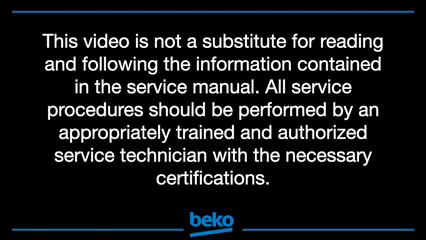I cannot repair my washing machine without documentation. I have no idea how to use my multimeter to check the components. There are parts dealers for Beko in my area, but none of them have the service manual.
The parts shops all say go to the website for the manual as a flippant off-the-cuff answer. There are no service manuals on the Beko website -- at least not for my model. The navigation of the Beko website does not even have a path to docs. And worse, my model is treated as non-existent by the website.
What would I do if I were a professional repair service? What is the official channel?
I am open to “piracy¹” but it would be a long shot to scour all the dark web for a manual for a specific washing machine. It’s not the type of content people have a strong interest in spreading/trading.
¹As RMS says, it’s not a just and appropriate term for it (but “sharing” is awkward too).
(update) Added frame from Youtube video t1XaUolbjLY which shows that service manuals exist for at least some Beko models. As we can see in the snapshot, Beko wants to restrict who is servicing their machines. (btw the video covers a very different model than mine).
I probably need to find the test mode for my machine, comparable to YT video cq_uSyghZC0.
new problem
The machine reached a new low. Now there actually is a problem with the water valve, it seems. When running a program, it pauses then the start button just blinks. (It previously started by pumping then at least filled the tub). So I followed this video from the 5m10s position. I do not get 220v on either valve. But certainly I can see that 220V is getting to the control panel. So 220v goes into the control panel, but does not make it out of the control panel leads where the water valve connects.
(edit) The water valves themselves are fine (I connected 220v directly to the water valves and water flows). I guess I should suspect the pump now. The pump was actually the very first task back when the machine worked. So I should not have even been looking at the water valves which only start after the initial pumping ends.

